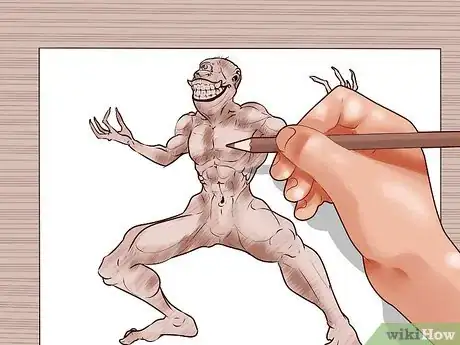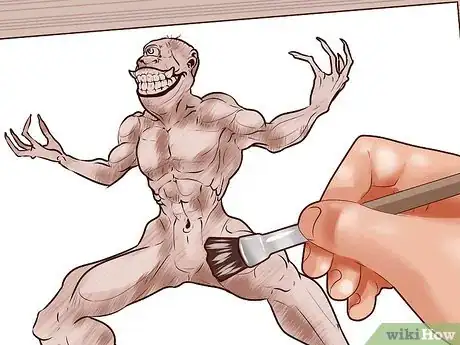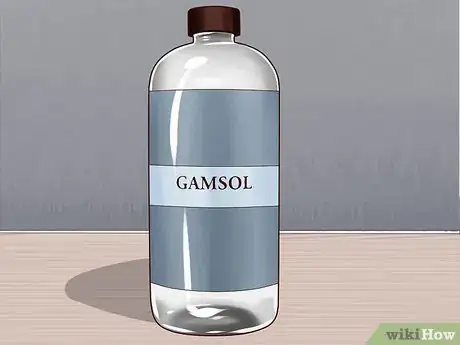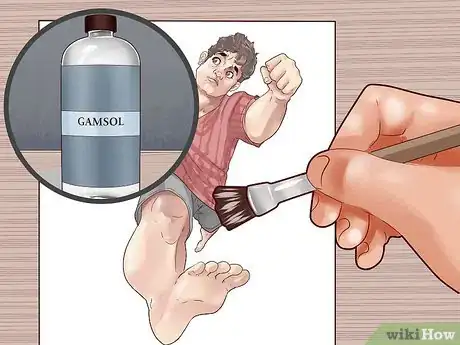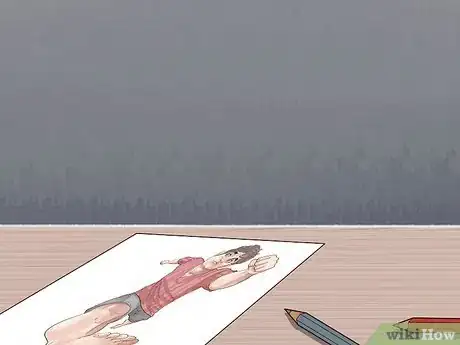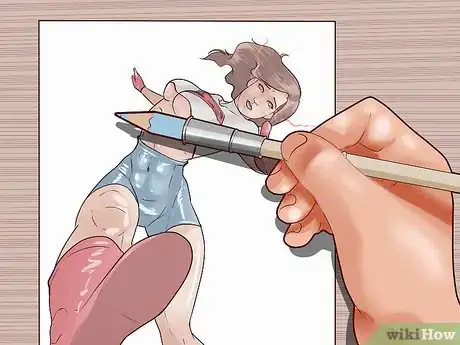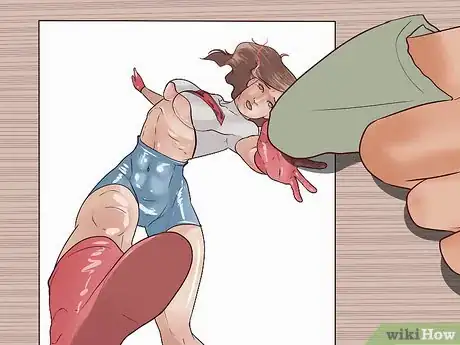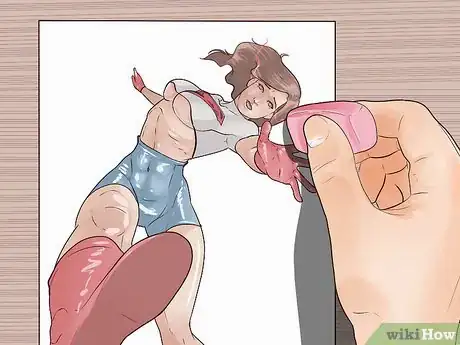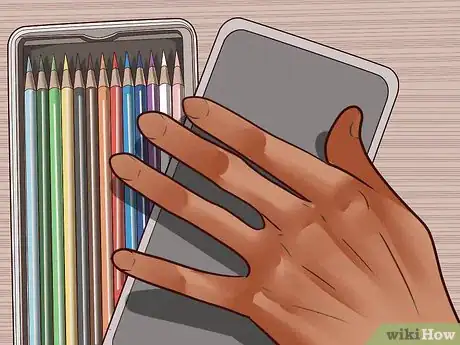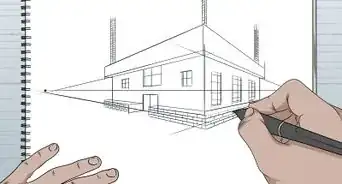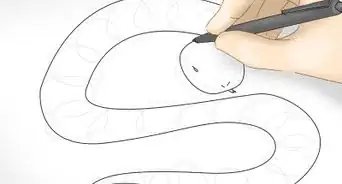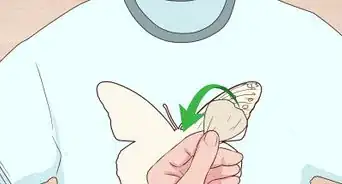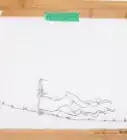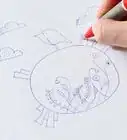This article was co-authored by Kathy Leader. Kathy Leader is an Artist and the Owner of The Art Process. With more than 36 years of art education experience, she specializes in providing mixed media art workshops for individuals and groups. In addition, she works with businesses and organizations to build morale, encourage creative problem solving, and find de-stressing tools. Kathy holds a BFA in Art Education from The University of Cape Town.
wikiHow marks an article as reader-approved once it receives enough positive feedback. In this case, 100% of readers who voted found the article helpful, earning it our reader-approved status.
This article has been viewed 188,697 times.
Blending Prismacolor pencils can be difficult even for experienced artists. Unlike other mediums like charcoal, chalk, or graphite, colored pencils cannot be blended with pieces of scrap paper or a tortillion. However, there are techniques you can use and solvents available so you can achieve the blended effect you desire with your pencils.
Steps
Using Blending Techniques with Prismacolors
-
1Layer your colors to create a blending effect. By layering one color on top of another, you can lighten or darken it to accomplish the hue you have in mind. This should be done lightly and with as few strokes as possible. You can always add more of your layer color, but once added, it'll be difficult, if not impossible, to remove.
- You can lighten dark colors with a layer of a lighter color, like white, over top. This can also help with softening colors, like the one found in skin tones.[1]
-
2Utilize a blender pencil. This tool looks like a clear colored pencil and it is intended specifically for blending colored pencils.[2] It is sometimes referred to as a colorless blender. Rub this tool firmly upon the colors you are trying to blend and pass it back and forth until the desired level of blending is reached.[3]
- By spreading a thick layer-color over a base-color with your blender pencil, you can create a glaze effect over top the base. This will also impart a blended effect to your artwork.
- Make sure to use a pencil that is not sharp so that the lines are softer.[4]
Advertisement -
3Spread colored pencil with a bristle brush. With a moderately stiff bristle brush, you can drag colors you've already applied to the page around it. Thin coverage will give your colors a lighter tone; thick concentration will intensify the color. Colors spread together will blend.
- You may have to experiment with this and get some experience before you become fully comfortable with the technique.
- You should choose your brush with regard to the paper you have used. Thicker paper may allow you to use stiffer brushes for easier blending. Thinner paper might require a soft bristle brush and gentle blending over time.
- You should also be able to use a tortillion to push colors around the page to create either increased or decreased brightness.[5]
-
4Smudge colors to imitate blending. Though paper and tortillions won't be effective for blending, a cloth can be used to smudge colors together to attain this look. You may want to start by smudging a small, inconspicuous area with a tiny piece of cloth to see how the colors blend before attempting to blend the main parts of your art.
- Some cloth might blend differently than others or create a unique effect in your drawing. Testing your cloth beforehand can prevent unintended effects when blending.[6]
Applying a Solvent for Blending
-
1Add your colored pencil to the image. You're going to be breaking down the lead of your Prismacolors to blend the colors together, so you'll first need all your color on the page. Start with your base and add strokes of other color. These accent colors will blend with the base once the solvent is added.[7]
- Sometimes after drawing with Prismacolors you might notice a waxy buildup on the colored areas. If this makes your blending more difficult, you can wipe away the waxy film with a soft, dry cloth.
-
2Choose your solvent for blending. In most cases, mineral spirits should be sufficient for your blending efforts, though there are specific brands intended for this purpose, like Gamblin Gamsol Odorless and Weber Terpinoid natural. Pour a small amount of this solvent in a small, resealable glass container.[8]
- These kind of solvents can break down certain common plastics over time. Due to this effect, you should avoid using a plastic container for your solvent.
- You won't need much solvent for blending. A little bit goes a long way, so a small container will likely serve your purposes best.
- A resealable container is especially helpful when you are drawing often with Prismacolors. This way you can reuse your solvent easily.
-
3Brush on your solvent to blend the Prismacolors. Using too much solvent can cause your colors to become runny. It may take some time and practice before you get the knack for adding the right amount of solvent. Generally, you should:
- Dip an inexpensive synthetic brush into your solvent. Remove the brush, then blot excess solvent from it with a paper towel.
- Brush your solvent lightly onto the area you are blending with your brush. Continue blending, little by little, until you achieve the desired effect.[9]
-
4Allow your blended Prismacolors time to dry. Eventually, the solvent will evaporate and your blended Prismacolor lead will return to its original consistency. Keep your artwork level to prevent colors from accidentally running.
- Depending on how much solvent you needed to use while blending, your solvent blended art may be dry in less than an hour. In some cases, this may take up to a day to completely dry.
Improving Your Colored Pencil Technique
-
1Cover unused areas on the page. Over the course of your blending, it's easy to accidentally spread color to an area you hadn't intended. To prevent this, you might cover the areas you don't want blending with removable tape.[10]
- For large areas, to save on tape you might decide to use a piece of scrap paper held in place by a few small pieces of tape.
-
2Use a pencil extender to get your money's worth. Prismacolor pencils can be very expensive, so it's a good idea to get the most out of every pencil you purchase. A pencil extender will allow you to hold the end nub of a used pencil more easily so you can use every last bit.[11]
-
3Remove wax buildup. Wax is a component used in manufacturing your colored pencils. Over time it can rise to the surface of your drawing to create buildup on the image. This can be removed without harming your artwork by wiping it away firmly with a clean, dry cloth or moderately stiff bristle brush.
- You'll often find that wax buildup occurs in areas you have heavily applied your colored pencil to a specific area. Keep an eye on these areas for buildup.[12]
-
4Remove marks made with your Prismacolors. Prismacolor pencils leave behind marks that can be difficult to erase, though you may have some success with a normal eraser. However, it's likely you'll have the best success with an electric eraser. You can also lift unwanted marks by applying and peeling free adhesive putty, like the kind used to hang posters and artwork.[13]
- Even with an electric eraser, it's likely some remnant of the Prismacolor will remain. Avoid erasing too much to try and completely erase the mark. Doing so could result in a ripped page.[14]
-
5Treat your Prismacolor pencils gently. The colored cores of your Prismacolors are relatively fragile and can break from dropping or rough handling. These breaks can result in inconsistent drawing or wasted lead, so you may want to keep your pencils in a box or case to keep them protected.[15]
Community Q&A
-
QuestionCan I blend Sanford Prismacolor pencils with Primere Prismacolor pencils?
 Community AnswerBlending two different brand colored pencils should work, but as the components of these may be different, the brands may blend inconsistently.
Community AnswerBlending two different brand colored pencils should work, but as the components of these may be different, the brands may blend inconsistently. -
QuestionWhat is the difference between Sandford Prismacolored pencils and Prismacolor Premier?
 Community AnswerSanford is an older brand of Prismacolor that was made in the US, and not in Mexico. Some people have said the new Premiers are of a lower quality, the lead often is not centered, and the wood is inferior to the older brands of Prismacolor (such as the Eagle, Sanford, and Berol).
Community AnswerSanford is an older brand of Prismacolor that was made in the US, and not in Mexico. Some people have said the new Premiers are of a lower quality, the lead often is not centered, and the wood is inferior to the older brands of Prismacolor (such as the Eagle, Sanford, and Berol). -
QuestionWhat's the best way to blend a large area (e.g. the background of a large piece of paper)?
 ignore meCommunity AnswerA rag usually works along with some solvent. If you use a colorless blender, it'll be much more difficult and time-consuming though.
ignore meCommunity AnswerA rag usually works along with some solvent. If you use a colorless blender, it'll be much more difficult and time-consuming though.
Things You'll Need
Using Blending Techniques with Prismacolors
- Prismacolor Pencils
- Pencil blender
- Bristle brush (with moderately stiff bristles)
- Soft rag/blending cloth
Applying a Solvent for Blending
- Container (for solvent, glass preferred)
- Solvent (like mineral spirits)
- Synthetic pain brush
- Paper towel
Improving Your Colored Pencil Technique
- Adhesive tape (optional)
- Electric eraser (optional; recommended)
- Pencil case (optional)
- Pencil extender (optional; recommended)
- Soft cloth/rag (optional)
References
- ↑ https://keetonsonline.wordpress.com/2015/03/09/29-prismacolor-pencil-tips-techniques/
- ↑ Kathy Leader. Artist. Expert Interview. 13 February 2022.
- ↑ http://www.craftsy.com/blog/2015/07/how-to-blend-colored-pencils/
- ↑ Kathy Leader. Artist. Expert Interview. 13 February 2022.
- ↑ https://keetonsonline.wordpress.com/2015/03/09/29-prismacolor-pencil-tips-techniques/
- ↑ https://keetonsonline.wordpress.com/2015/03/09/29-prismacolor-pencil-tips-techniques/
- ↑ http://www.craftsy.com/blog/2015/07/how-to-blend-colored-pencils/
- ↑ http://paintspot.ca/wp-content/uploads/2012/10/Coloured%20Pencil%20Prismacolor%20Tips.pdf
- ↑ http://www.craftsy.com/blog/2015/07/how-to-blend-colored-pencils/
- ↑ https://keetonsonline.wordpress.com/2015/03/09/29-prismacolor-pencil-tips-techniques/
- ↑ https://keetonsonline.wordpress.com/2015/03/09/29-prismacolor-pencil-tips-techniques/
- ↑ https://keetonsonline.wordpress.com/2015/03/09/29-prismacolor-pencil-tips-techniques/
- ↑ https://keetonsonline.wordpress.com/2015/03/09/29-prismacolor-pencil-tips-techniques/
- ↑ https://www.prismacolor.com/support/faqs
- ↑ https://keetonsonline.wordpress.com/2015/03/09/29-prismacolor-pencil-tips-techniques/
About This Article
To blend with Prismacolor pencils, try layering darker colors over lighter colors with gentle pressure to add dimension. You can also lightly use white pencil over darker colors to blend and lighten hues. Another easy blending technique is to pass a blender pencil, which you can get at art supply stores, back and forth over the area until the desired level of blending is reached. For tips on using solvents for blending, read on!
